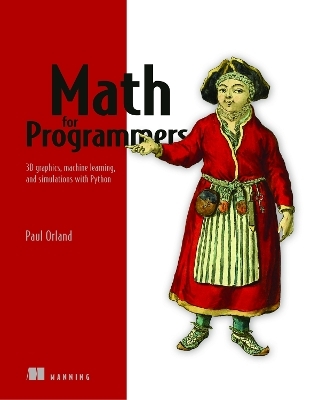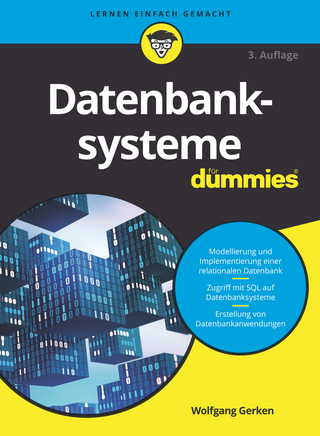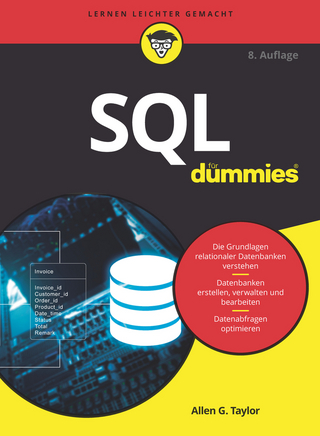
Math for Programmers
Manning Publications (Verlag)
978-1-61729-535-5 (ISBN)
Filled with lots of helpful graphics and more than 200 exercises and mini-projects, this book unlocks the door to interesting–and lucrative!–careers in some of today’s hottest programming fields.
Key Features
· 2D and 3D vector math
· Matrices and linear transformations
· Core concepts from linear algebra
· Calculus with one or more variables
· Algorithms for regression, classification, and clustering
· Interesting real-world examples
Written for programmers with solid algebra skills (even if they need some dusting off). No formal coursework in linear algebra or calculus is required.
About the technology
Most businesses realize they need to apply data science and effective machine learning to gain and maintain a competitive edge. To build these applications, they need developers comfortable writing code and using tools steeped in statistics, linear algebra, and calculus. Math also plays an integral role in other modern applications like game development, computer graphics and animation, image and signal processing, pricing engines, and stock market analysis.
Paul Orland is CEO of Tachyus, a Silicon Valley startup building predictive analytics software to optimize energy production in the oil and gas industry. As founding CTO, he led the engineering team to productize hybrid machine learning and physics models, distributed optimization algorithms, and custom web-based data visualizations. He has a B.S. in mathematics from Yale University and a M.S. in physics from the University of Washington.
Paul Orland is CEO of Tachyus, a Silicon Valley startup building predictive analytics software to optimize energy production in the oil and gas industry. As founding CTO, he led the engineering team to productize hybrid machine learning and physics models, distributed optimization algorithms, and custom web-based data visualizations. He has a B.S. in mathematics from Yale University and a M.S. in physics from the University of Washington.
table of contents READ IN LIVEBOOK 1LEARNING MATH WITH CODE PART 1: VECTORS AND GRAPHICS READ IN LIVEBOOK 2DRAWING WITH 2D VECTORS READ IN LIVEBOOK 3ASCENDING TO THE 3D WORLD READ IN LIVEBOOK 4TRANSFORMING VECTORS AND GRAPHICS READ IN LIVEBOOK 5COMPUTING TRANSFORMATIONS WITH MATRICES READ IN LIVEBOOK 6GENERALIZING TO HIGHER DIMENSIONS READ IN LIVEBOOK 7SOLVING SYSTEMS OF LINEAR EQUATIONS PART 2: CALCULUS AND PHYSICAL SIMULATION READ IN LIVEBOOK 8UNDERSTANDING RATES OF CHANGE READ IN LIVEBOOK 9SIMULATING MOVING OBJECTS READ IN LIVEBOOK 10WORKING WITH SYMBOLIC EXPRESSIONS READ IN LIVEBOOK 11SIMULATING FORCE FIELDS READ IN LIVEBOOK 12OPTIMIZING A PHYSICAL SYSTEM READ IN LIVEBOOK 13ANALYZING SOUND WAVES WITH A FOURIER SERIES PART 3: MACHINE LEARNING APPLICATIONS READ IN LIVEBOOK 14FITTING FUNCTIONS TO DATA READ IN LIVEBOOK 15CLASSIFYING DATA WITH LOGISTIC REGRESSION READ IN LIVEBOOK 16TRAINING NEURAL NETWORKS APPENDIXES READ IN LIVEBOOK APPENDIX A: GETTING SET UP WITH PYTHON READ IN LIVEBOOK APPENDIX B: PYTHON TIPS AND TRICKS READ IN LIVEBOOK APPENDIX C: LOADING AND RENDERING 3D MODELS WITH OPENGL AND PYGAME
| Erscheinungsdatum | 18.01.2021 |
|---|---|
| Verlagsort | New York |
| Sprache | englisch |
| Maße | 188 x 234 mm |
| Gewicht | 1240 g |
| Themenwelt | Mathematik / Informatik ► Informatik ► Datenbanken |
| Mathematik / Informatik ► Informatik ► Programmiersprachen / -werkzeuge | |
| ISBN-10 | 1-61729-535-3 / 1617295353 |
| ISBN-13 | 978-1-61729-535-5 / 9781617295355 |
| Zustand | Neuware |
| Informationen gemäß Produktsicherheitsverordnung (GPSR) | |
| Haben Sie eine Frage zum Produkt? |
aus dem Bereich


